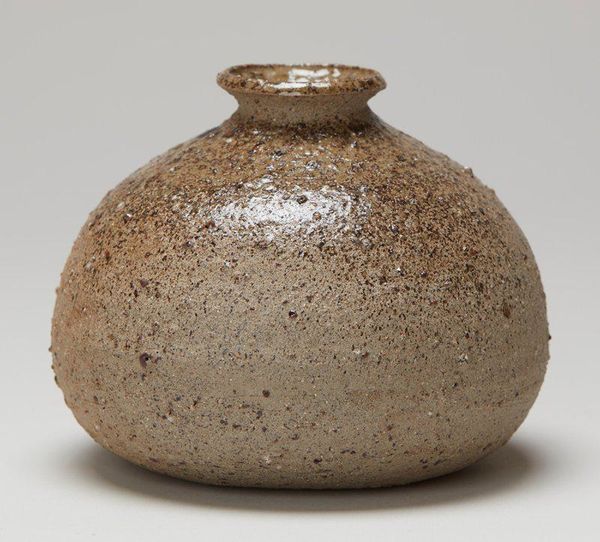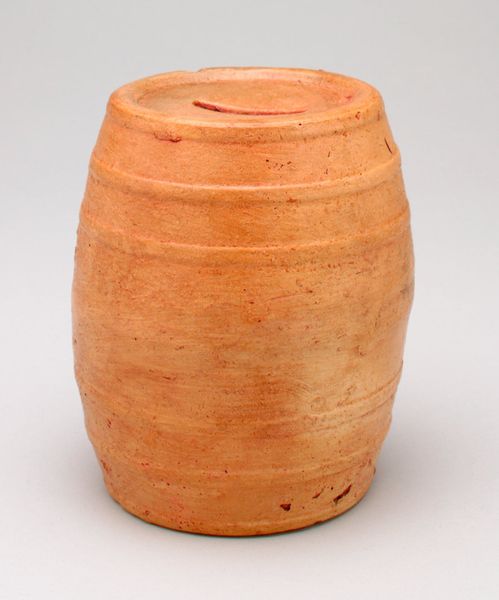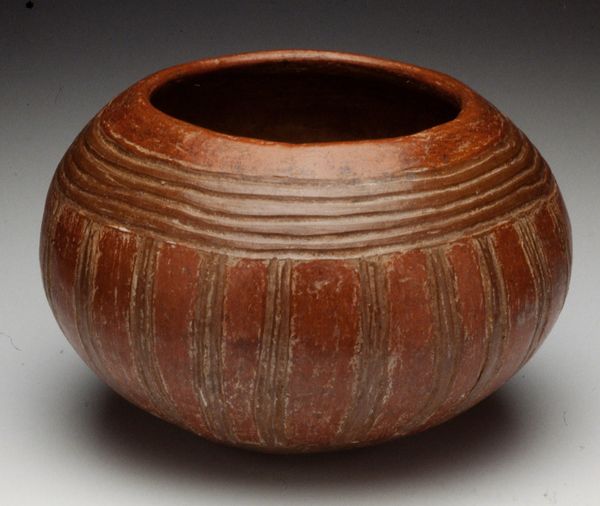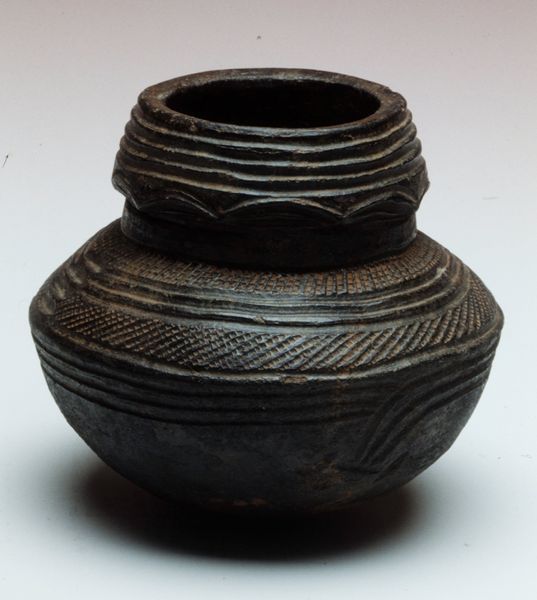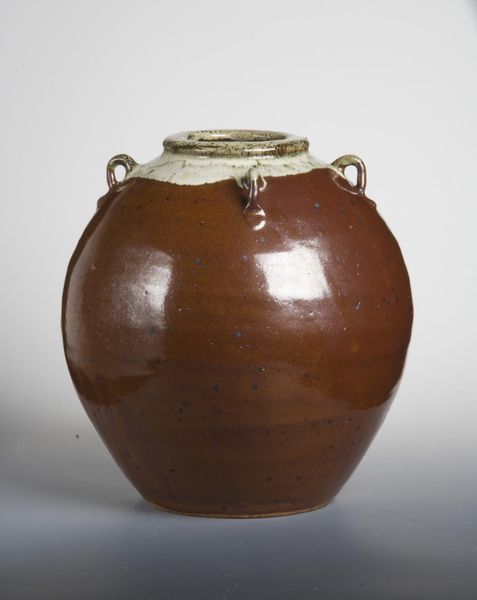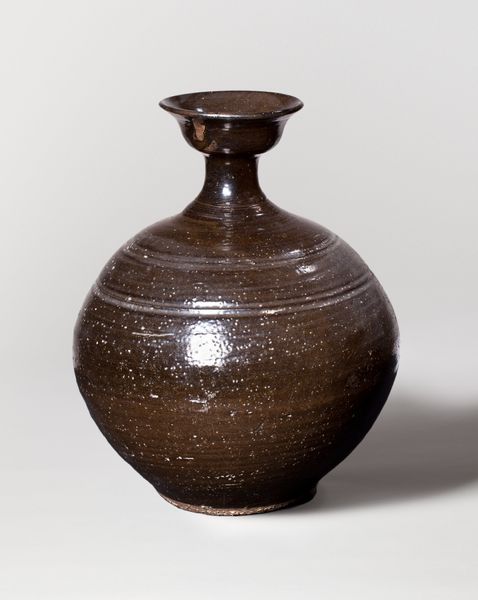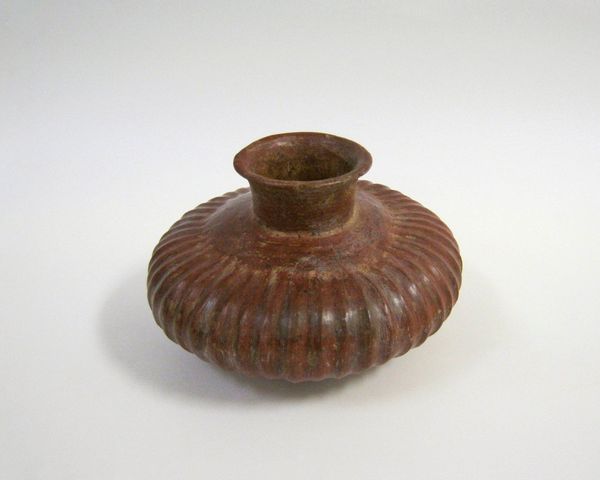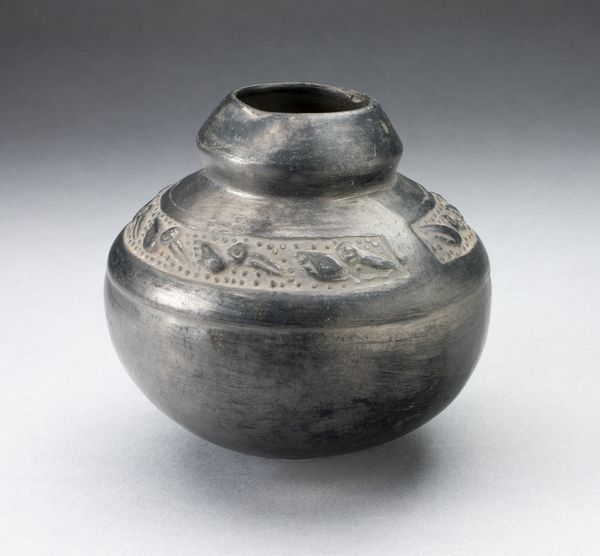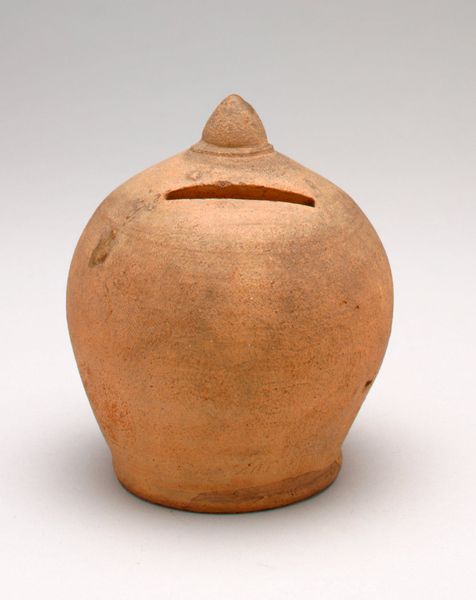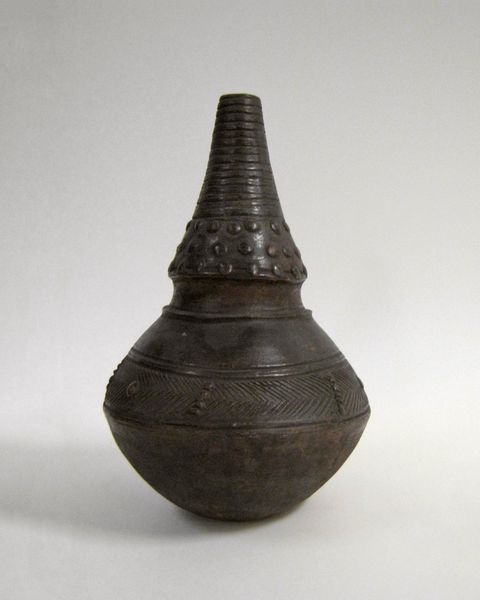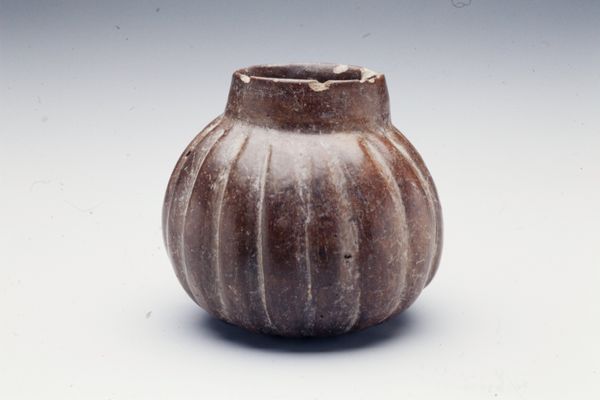
ceramic, earthenware
#
asian-art
#
ceramic
#
abstract
#
earthenware
#
stoneware
Dimensions: 16 1/2 × 19 in. (41.91 × 48.26 cm)
Copyright: No Known Copyright
Curator: Isn't it incredible? Fujiwara Kei's "Jar" from around the 20th century. It's currently housed at the Minneapolis Institute of Art. The work itself, mostly earthenware and stoneware, showcases Fujiwara's dedication to the Japanese ceramic tradition, updated with abstraction. Editor: Well, hello there, moody orb! Right away, it feels so earthy. Those drips! They make me think of a very slow, very deliberate rain, almost as if it’s crying or melting into itself. I love that subdued, almost melancholy, palette. Curator: The 'melancholy' as you put it, could stem from the era of its creation and consumption. It was likely displayed and consumed by an audience deeply engaged with questions of tradition versus modernity in post-war Japan. The galleries and museums featuring these pieces provided critical spaces for reflecting on Japan’s identity in flux. Editor: Hmm. I don't know that I automatically leap to "post-war angst," but, like any well-wrought vessel, I see something elemental here – like primal mud taking form in nature... or maybe an ancient rain god who's seen better days! The scale of the drips gives this quiet sense of monumentality despite what I'm assuming isn't its massive size. It seems so heavy somehow. Curator: Right! Size and presumed weight also play tricks depending on display. This piece has lived different lives based on location and installation. I imagine now, with its exhibition context in an American museum, that it participates in a transcultural dialogue – its presence subtly influencing how Western audiences see not just Japanese art but also contemporary movements of ceramic art internationally. Editor: Absolutely. And while context provides such invaluable clues for understanding, that very act of observation creates a feedback loop with the maker's original intent – or perceived intent, rather – imbuing these "static" forms with such lively possibility. Well, that and I wonder how long that piece took to fire and get it to not shatter completely. Curator: That it speaks to our need to situate objects in relation to both history and aesthetics, making museums dynamic spaces of continuous understanding and reassessment is something. Thanks for being with me in the dialogue of Fujiwara's jar. Editor: And thanks for helping this sad mud ball not feel so alone, at least for a little while. I need a pottery wheel right now.
Comments
No comments
Be the first to comment and join the conversation on the ultimate creative platform.
